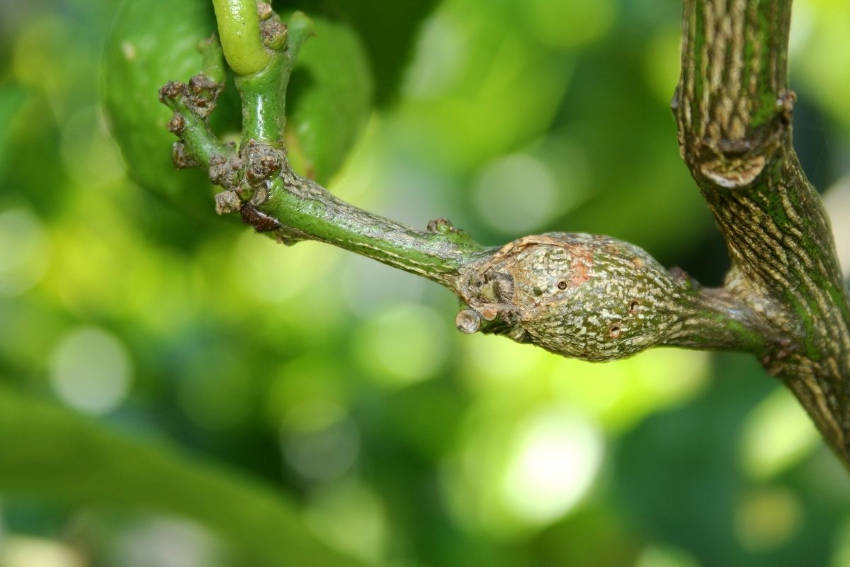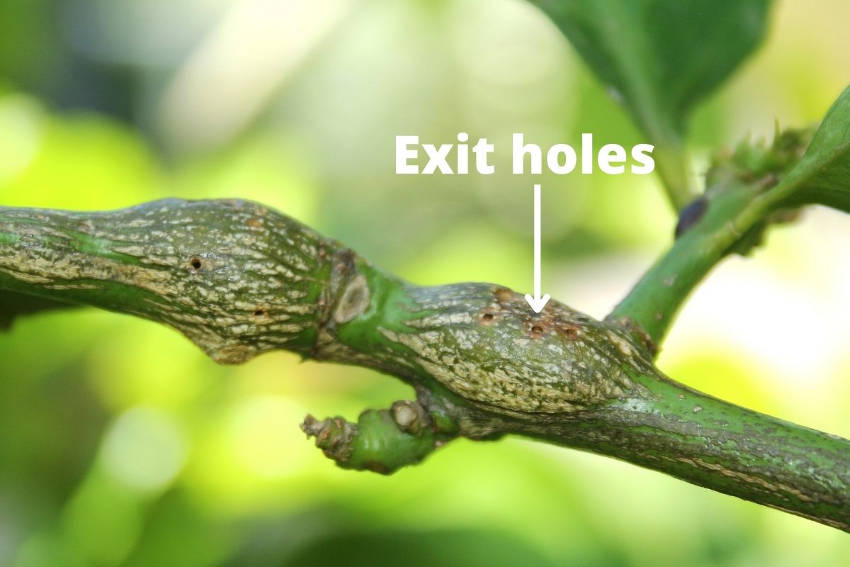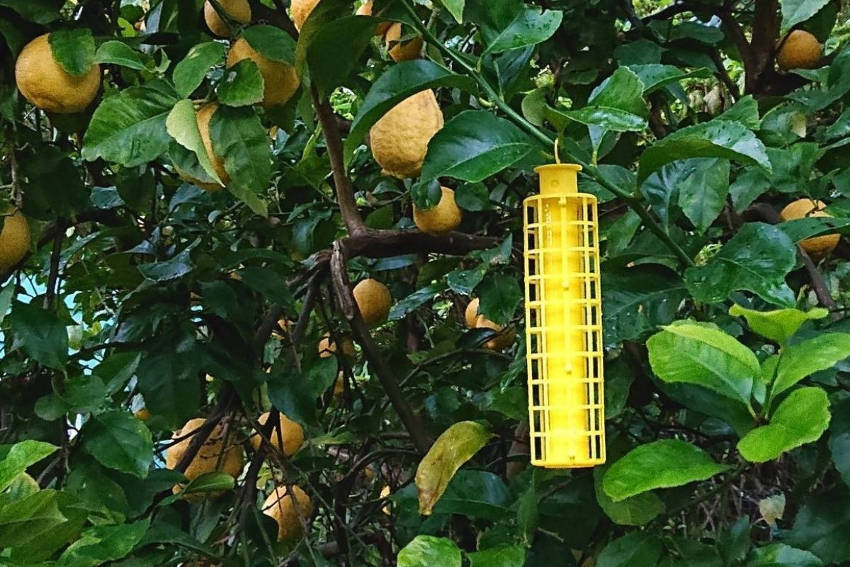Anyone in southern states with a backyard lemon tree will likely be familiar with the telltale branch swellings caused by the citrus gall wasp. This pest attacks all the varieties of citrus trees in Australia, including native finger limes. Citrus gall wasp originates in Queensland and northern New South Wales, where its population is kept in check by natural predation.
Unfortunately, the wasp hasn't stuck to its native area and has slowly moved southwards to colder climates. Equally unfortunately, its less cold-tolerant predators haven't followed in its wake. The result is that wasp infestations in the southern states can grow virtually unchecked, causing potentially serious impacts for the trees affected.
And while the damage to citrus trees often isn’t fatal, fruiting can be reduced, growth stunted, and the trees' appearance can be degraded by the unsightly galls the wasps create on the stems.
Recognising the Citrus Gall Wasp
The citrus gall wasp goes by the botanical name Bruchophagus fellis and is a tiny creature just 2-3mm long. However, you won't normally see the wasps themselves due to their short adult lives, and their presence is usually only betrayed by the damage they cause as larvae.
Adult wasps lay their eggs during spring in the bark of new citrus growth and then die between three and 14 days afterwards, depending on the temperature. A single adult can lay up to 100 eggs. After the eggs hatch, the larvae burrow deeper into the stem to feed on the citrus tissue within. The tree reacts to this trauma by producing extra cells, which mount up to create bumps on the bark known as ‘galls’. These galls start as small swellings on the surface, but then grow larger, turning grey or brown over time.
The following spring, the adults emerge from the galls to lay new eggs and start the cycle again, leaving tiny holes as they exit the galls.
How Damaging Are Citrus Gall Wasps?
Except in the most serious cases, the wasps won't fatally damage a tree. However, growth can be stunted and fruiting reduced, and if a younger tree is badly affected it's often best to uproot it and start afresh rather than hoping it recovers to full productivity.
Older trees will also show reduced fruiting and growth but will be more able to shrug off a light infestation. However, as the wasps spread from garden to garden very easily, it's good practice to deal with infestations as they occur rather than waiting for them to become a serious problem.
Management of Citrus Gall Wasp
The best time to tackle an infestation is in late winter when fruiting has finished but the wasps haven’t emerged from the galls. Branches with many galls can be pruned away completely. Unfortunately, because citrus plants only flower at the end of their branches, this will necessarily reduce fruit yields in the following season.
Alternatively, use a razor blade, sharp knife or potato peeler to slice off the outside of each gall and reveal the larvae inside. This method kills larvae by exposing them to air. When cutting, face the blade away from your body for safety, and cut lengthwise along the stem on one side only. Avoid going completely around a stem, as ringbarking a branch will kill it off.
This method is only suitable for fresh galls with wasps inside, as cutting into empty ones puts the tree under unnecessary stress. Before cutting, check for the small ‘exit’ holes on the gall that the wasps make when leaving, and ignore galls that have been vacated.
Dispose of all pruned material by solarising it under a plastic cover, or seal it in a bag and add it to normal rubbish rather than the compost heap or green bin. While wasps can only fly short distances to infest new trees, they can also emerge from pruned branches. Putting prunings in a green bin or the compost bin may result in the pest spreading further.
Citrus Gall Wasp Prevention
After you've dealt with an infestation, you can take several steps to help prevent the problem from recurring. Monitoring and management is, unfortunately, an ongoing task.
Firstly, use a light touch with fertiliser in spring, as wasps prefer to lay their eggs in juicy new growth. Instead, fertilise mainly in autumn with only a small amount in spring, or delay feeding altogether until summer. Similarly, regular pruning to encourage new growth will also provide wasps with the fresh new growth they prefer; prune trees only every second year if possible.
Applying eco-oil in early spring can deter the wasps from laying eggs, but remember to spray the bark rather than the foliage, in contrast to most other types of spray treatment.
And lastly, hanging sticky traps near the galls can catch the adult wasps as they emerge, and break the cycle. Be sure to hang the traps within the tree canopy rather than around the tree’s dripline. This will increase the chances of catching the citrus gall wasp while minimising risks to other more beneficial insects.
Citrus trees are a valued part of the home orchard. With a little attention to this common pest, you can help your trees to be healthy and productive for years to come.








